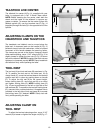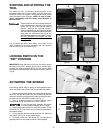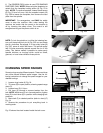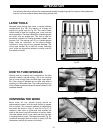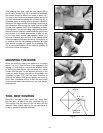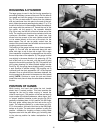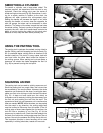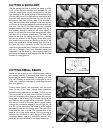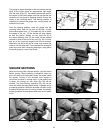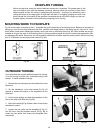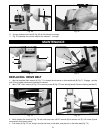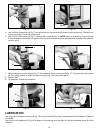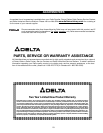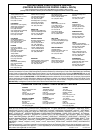
18
VEE GROOVES
Cutting the vee groove demands much the same
technique as the bead, except the skew is hinged
straight into the work without rotation (Fig. 51). Only
one-half of the vee is made at a time, and one, two, or
more cuts may be needed on each side to obtain the
desired shape. As in all cutting with the skew, the bevel
next to the cut must be used as a fulcrum. Be careful not
to allow full edge of the chisel to catch and cause a run.
Vee grooves can also be made with the toe of the skew,
in the same manner as squaring an end.
LONG CUTS
Long cuts are usually either convex or straight-tapered
surfaces. With a convex surface, the method used in
making the finishing cut is shown in Figs. 52. The gouge
is turned on the tool rest so that it will be inclined in the
direction that it will move. The grind is tangent to the
work, and the center point of the cutting edge is the
contact point with the wood. As the cut progresses
toward and around the end of the curve, the handle is
gradually raised and swiveled to the right (Fig. 53) in
order to maintain the tangency between the grind and
the surface being cut .
Figs. 54 and 55 show the cutting of a long taper with a
skew. The operation differs from smoothing a cylinder
only at the start of the cut. The starting cut should be
made with the heel (Fig. 54) to prevent the tool from
digging into the work. As the tool moves down the work,
the chisel can be pulled back to allow the center point of
the cutting edge to cut. However, the full taper can be
made with the heel. Be careful not to cut too deeply at
the center of the taper. The direction of cutting is always
downhill.
Fig. 51
Fig. 55
Fig. 52
Fig. 53
Fig. 54
COVE CUTS
Second to forming a perfect bead, the cove or concave
cut is the most difficult to master. This cut is made with
the gouge, where the size of the tool depends on the
size of the cut. Push the gouge directly into the work to
remove the surplus stock (Fig.56).
Fig. 56




